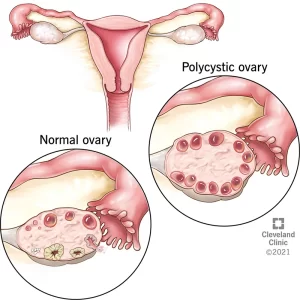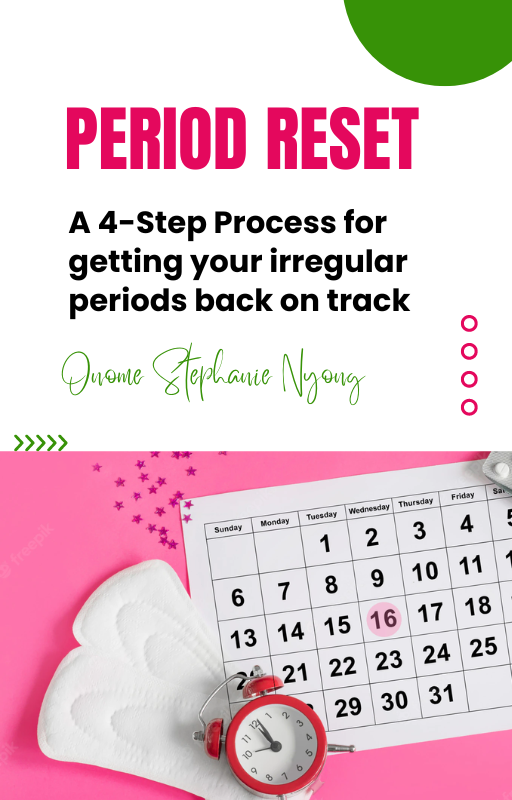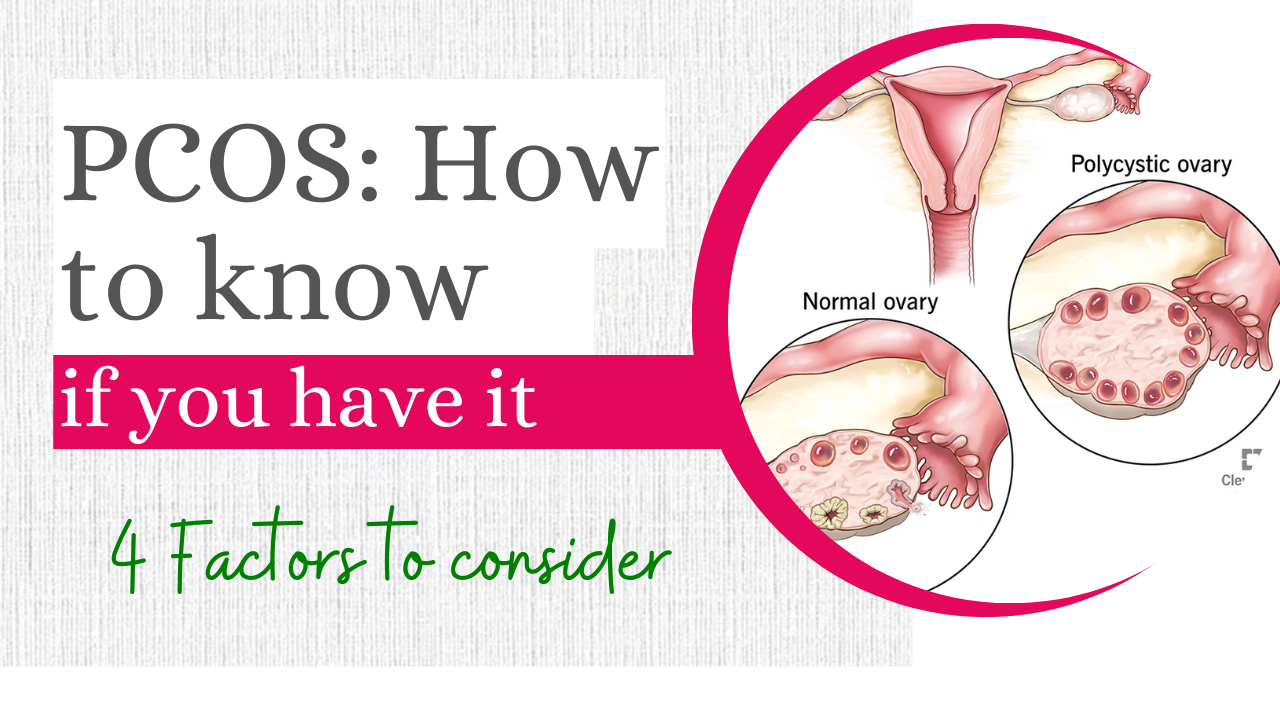If you were told you have Polycystic Ovarian syndrome (PCOS) from only doing an ultrasound, I’m here to tell you that an ultrasound alone is not enough to say you have PCOS.
In this article, I’ll be telling you why an ultrasound alone is not enough and the complete criteria for a PCOS diagnosis, in this case, 4 factors to consider.

A normal ovary just like you see in the picture above contains small fluid-filled sacs called follicles. Follicles contain immature eggs and you know what? These are also referred to as cysts.
I bet you've heard of ovarian cysts before. Ovarian cysts and PCOS are two different conditions that are often confused with each other. How are polycystic ovaries different from an ovarian cyst?
In the case of polycystic ovaries, cysts are small containing follicles with immature eggs while ovarian cysts are very large growing to a size where they begin to cause pain. Ovarian cysts do not affect the process of ovulation. I needed us to understand that first before we move on.
If you’ve watched some of my previous videos on ovulation, I talk about the process a lot. At the beginning of the cycle about several eggs in follicles begin to mature on the journey to ovulation but at the end of the day only one makes it. And as soon as ovulation occurs, the number of follicles reduces and the ovary looks normal again. So practically, seeing these little cysts on the ovary means one of three things. Ovulation has not happened, it’s not happening or did not happen in that cycle. And younger women have more follicles than older women because they have more eggs
So, if you’ve been paying attention at this point you are thinking so,
When is it PCOS?
It is PCOS when....
1. There is a case of androgen excess
a case of androgen excess when all other causes of androgen excess have been ruled out (things like high prolactin). This would be an excess of male hormones found in a blood test. Women produce male hormones in the ovaries and adrenal glands but in small amounts. It is normal but in women with PCOS it is in excess. When we say male hormones, we are talking about hormones like testosterone, dehydroepiandrosteronesulphate(DHEAS) and androstenedione
2. Manifestation of clinical symptoms
symptoms like loss of hair on the front of the head, excessive hair growth on the face, neck, back, acne, weight gain around the abdomen.
3. Infrequent ovulation/irregular periods
When I say infrequent ovulation, I mean not ovulating in every cycle. It’s different from irregular periods because you can still see your periods and not ovulate. Irregular periods on the other hand is seeing your periods once in two months or three months or even longer. Very long cycles!
4. A pelvic ultrasound
A pelvic ultrasound showing multiple fluid filled cysts around the edges of the ovary just like you can see in the previous image above.
So, a quick recap; How do you know if it is really PCOS? First. Androgen excess confirmed through lab tests and /or manifestation of clinical symptoms meaning it could be one of them or both and infrequent ovulation/irregular periods before a pelvic ultrasound
Simple! As a matter of fact, very many years ago when the diagnosis for PCOS began, polycystic ovaries seen on an ultrasound wasn't a criteria until later.
The aim of this article is to educate women because I have seen a lot of women misdiagnosed, sad, undergoing treatments they don't need because the ultrasound showed multiple cysts on the ovaries without a test to prove androgen excess. Even if it is indeed PCOS, there are a list of treatment options available.
It will shock you to know that some women are not eating well enough to have a period. In their own case, their problem is undereating even if they have polycystic ovaries on an ultrasound. So instead of increasing their food intake to get a period, they start cutting carbs as a means to deal with PCOS worsening their symptoms. I have also seen some others who have no idea they have PCOS because their ultrasound was clear at the time when they had the test done and for that reason they haven't undergone any treatment and are just confused not knowing why they are experiencing irregular periods. Unfortunately, these are the consequences of misdiagnosis.
When it comes to treatment, you also need to know the kind of PCOS you have to get the right treatment you need. Treatment is important because the right management will help to prevent diseases like diabetes/insulin resistance, obesity, heart disease etc. There are about 4 different types of PCOS and this is what I'll be talking about in the next article. Make sure to subscribe to my email list to get a notification if you haven't so you don't miss out.
If you'd like to have a consultation to discuss your tests, treatment or order some test, you can click the link below to book one.
You can read my free guide 'Period Reset' below to learn the 4-step process for getting irregular periods back on track


Do you have questions and concerns about your cycle and would like to speak to me about it to see if I can be of help. Click here to book a FREE 20minute discovery call
Would you like to learn how to chart your fertility signs correctly in order to track ovulation and time sex right? Get my short E-book 'How to get pregnant faster'


I am also the founder of Women's Health Platforms Foundation, an NGO clinic in Abuja providing women with low-cost preventive healthcare services.
Did you find this article helpful? Drop a comment and share with a friend!
